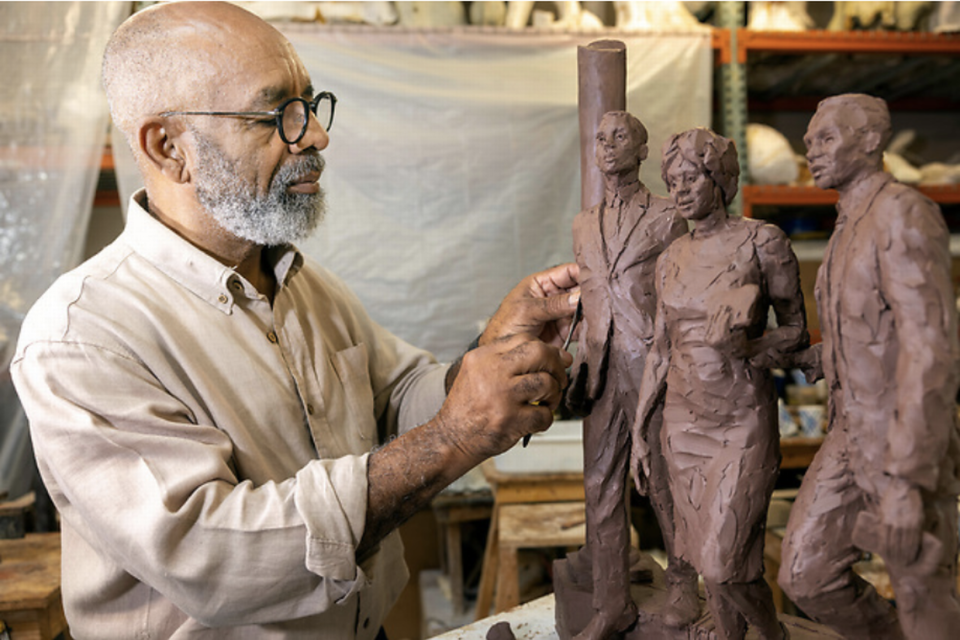A desegregated USC began with 3 students. Their legacy is now forever cemented on campus
On a hot day in September 1963, Henrie Monteith Treadwell, Robert Anderson and James Solomon Jr. descended the steps of the USC’s Osborne Administration Building and walked toward Hamilton College, where they would first register for classes.
After nearly a century of barring students of color, the University of South Carolina was finally desegregated.
“People must understand that my walking across that threshold was not the end of the story,” Treadwell said in September at the groundbreaking for a monument to honor the three students. “My walking across that threshold was the beginning of a story.”
A 12-foot bronze sculpture commemorating the iconic photo of that very moment now stands proudly on USC’s historic Horseshoe near the McKissick Museum, a permanent celebration of a turning point in the university’s history. The statue was set to be unveiled during a ceremony on Friday morning.
“It’s a special moment for us,” said USC Board Chairman Thad Westbrook.
The monument is at the “heart” of campus, said Dorn Smith, USC board member and former board chair. The board hand-picked its location so that every man, woman and child who comes to visit will walk past it and enjoy it.
Treadwell, a Columbia native, graduated at the top of her high school class. And though it was nearly a decade after the the U.S. Supreme Court’s historic Brown v. Board of Education ruling, which desegregated public schools, Treadwell’s application to USC was rejected in 1962.
With the help of civil rights attorney Matthew Perry, she and her family sued. And won. When the case made its way to the courtroom, university registrar Rollin Godfrey admitted on the stand: Treadwell had been rejected on the basis of race. The ruling opened the doors to Solomon and Anderson too.
Treadwell’s uncle’s home was bombed. The three students experienced harassment — from threatening calls to racial slurs. But unlike the violence and unrest that desegregation brought many southern universities, USC’s integration was a relatively peaceful transition and the three went on to earn degrees from the university. In 1965, Treadwell became the university’s first Black graduate since Reconstruction, and the first Black woman graduate ever.
USC board member and former NBA star Alex English grew up in Columbia and lived off of Barnwell and Gervais streets. He remembers, at that time, not being able to walk across USC’s campus to get to his elementary school.
“These three brave students stepping forward and putting their lives on the line ... so that all African Americans and people of color would get the opportunity to be educated at this great university,” said English.
The university Board of Trustees approved the creation of the monument in 2022 with unanimous support, on the eve of USC’s 60th anniversary of desegregation. The board later selected world-class Jamaican sculptor Basil Watson to design and craft it.

“We observe this anniversary not only to remember, but to look forward,” university President Michael Amiridis said in September. “Sixty years later, the momentous events of September 11, 1963, still inspire our USC community to uphold our commitment to higher education access and opportunity for all.”
Several years ago, a push was made to change the names of USC buildings that referenced segregationists and slave owners. The effort was effectively shut down by the state’s Heritage Act, which requires legislative approval to change state-owned buildings named for historic figures.
But the desegregation monument, along with the naming of Celia Dial Saxon Hall after the prominent Black educator and Civil Rights advocate, are part of a “forward-looking” approach to putting the university’s history into context, Westbrook said.

